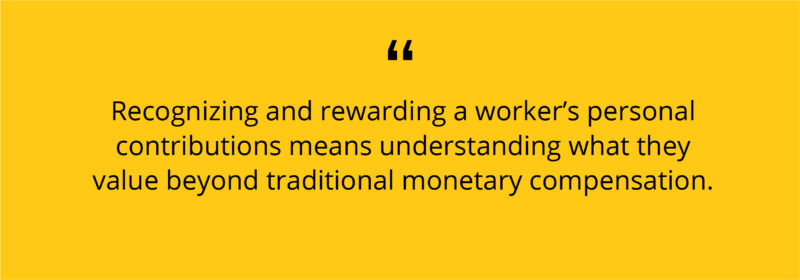It’s never been so easy for employees to find new jobs. An ongoing labour shortage coupled with a market still reeling from the pandemic have given applicants heightened negotiating powers. Catherine Jolicoeur-Giunta, Strategy Director, Employer Branding at Cossette, asks how can we navigate this issue and manage to stand out from our competitors as a top employer?
The pandemic and the subsequent period of adjustment have weakened employees’ attachment to their company. Engagement rates reached 73% at the beginning of 2020 but fell to 62% in the first quarter of 2022, according to a Kincentric report. In July 2022, McKinsey estimated that 30 to 40% of workers were thinking of quitting their job.
In a world where candidates are now shopping for jobs the way they would for a consumer product using comparison tools like Glassdoor, Indeed and Fishbowl, your employer brand has never been more important. While most companies do leverage theirs to attract potential employees to their teams, it’s key to remember that it should also be leveraged to boost engagement and the sense of affiliation amongst your current workforce.
With the costs of replacement of a qualified employee going from half to triple an employee’s yearly salary, it is crucial to put retention at the heart of your employer brand strategy. A strategic employer branding exercise gives an unprecedented perspective of your employees’ expectations of their work and allows you to measure their degree of appreciation of the experience you offer them as an employer. And to ensure you retain the best talent, providing a memorable and distinctive employee experience is key.
Mindfully crafting an employee experience has never been so crucial
For the first time ever, five different generations of professionals are working alongside each other in the labour market, each with their own perspective on work, their role within a company and the relationship they’d like to have with their employer. To adapt to their respective aspirations and engage with them every day, the challenge will be to assess their needs and expectations, and—above all—develop personalized strategies to live up to them.

What’s more, not everyone is looking for the same advantages or benefits when it comes to their work. It’s no surprise then that a personalized job experience is increasingly important for workers. By providing them with an experience that resonates with their own realities, you can create real connections with your employees and increase their levels of engagement.
How to achieve a personalized employee experience?
There are different ways you can go about personalizing the employee experience, whether you’re targeting internal communications procedures, benefits, wellness resources, career progression plans, development opportunities, or new approaches to management. Personalization also improves recognition at work, because recognizing and rewarding a worker’s personal contributions means understanding what they value beyond traditional monetary compensation.
The important thing is to have a solid understanding of your employees’ expectations and use this to create different profiles and build customizable experience journeys.

Among other benefits, this exercise will give managers the tools they need to guide and bolster their teams. They’ll be better equipped to adapt their support to each worker’s situation. Employees for their part will feel that their needs are considered and respected. This will have a ripple effect, resulting in stronger relationships within the team.
So, how do you see your employee experience in 2023?
Cossette is a member of the Institute of Canadian Agencies. Report on Marketing is where leading Canadian agencies showcase their insights, cutting-edge research and client successes. The Report on Marketing provides a valuable source of thought leadership for Canadian marketers to draw inspiration from. Find more articles like this at the Report on Marketing.
See all Ideas & Insights




